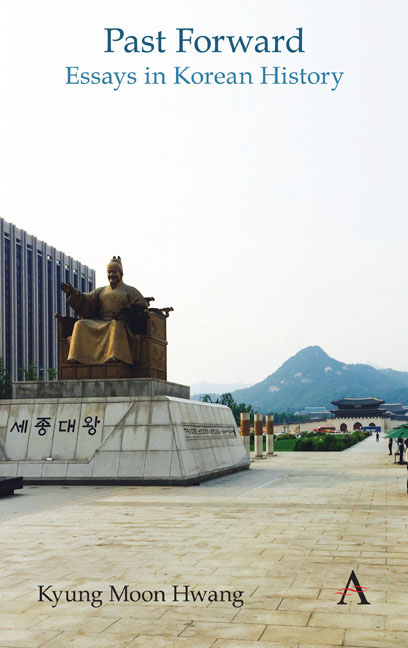Book contents
- Frontmatter
- Contents
- List of Figures
- Foreword
- Chronologies of Korean History
- Themes
- Acknowledgments
- Note on Romanization and Spelling
- Part I Circulating History
- Part II Durable Traditions
- 8 Marking the New Year
- 9 Slavery, Bondage, and Social Hierarchy
- 10 Marriage, Adultery, and Concubinage
- 11 Buddhism and Korean Identity
- 12 Christianity's Rapid Rise
- 13 Civil–Military Balance in Politics
- 14 Regionalism in Elections
- 15 Yeongnam's Strong Presidential Politics
- Part III Ancient Remains
- Part IV Dynastic Depths
- Part V Modern Origins
- Part VI Challenges of Nationhood
- Part VII History Makers
- Part VIII External Presences
- Part IX Trials of Modernization
- Part X Gripped by the Past
- Index
12 - Christianity's Rapid Rise
from Part II - Durable Traditions
- Frontmatter
- Contents
- List of Figures
- Foreword
- Chronologies of Korean History
- Themes
- Acknowledgments
- Note on Romanization and Spelling
- Part I Circulating History
- Part II Durable Traditions
- 8 Marking the New Year
- 9 Slavery, Bondage, and Social Hierarchy
- 10 Marriage, Adultery, and Concubinage
- 11 Buddhism and Korean Identity
- 12 Christianity's Rapid Rise
- 13 Civil–Military Balance in Politics
- 14 Regionalism in Elections
- 15 Yeongnam's Strong Presidential Politics
- Part III Ancient Remains
- Part IV Dynastic Depths
- Part V Modern Origins
- Part VI Challenges of Nationhood
- Part VII History Makers
- Part VIII External Presences
- Part IX Trials of Modernization
- Part X Gripped by the Past
- Index
Summary
Outside of the Philippines and enclaves such as Armenia and Georgia, South Korea remains the only country in Asia, home to more than half of the world's people, where Christians make up a substantial portion of the population. In historical terms, this means also that Korea became perhaps the only civilization where Christianity grew into a major religion without the aid of colonial or political domination. But in some ways, its development and ultimate acceptance repeated, in abbreviated form, the difficulties that the religion suffered initially in southern Europe and the Levant nearly 2,000 years ago.
There were probably some people in ancient Korea, beginning in the Silla kingdom of the fourth to tenth centuries, who had heard of Christianity through traders. But this did not lead to any lasting community of Korean Christians, and the religion did not draw any significant attention until the sixteenth century. That was when Jesuit priests made their way to China and Japan, where they worked as scholars and teachers and even attracted some converts. One convert, in fact, was a general who helped lead the Japanese invasion of Korea in the 1590s. (His new Catholic faith apparently did not deter him from ordering the mass slaughter of innocents.)
After the Manchus subdued Korea in the 1630s on their way toward conquering China, they took a Korean prince as hostage, and it was whispered that, while in captivity in Beijing, this young man took an interest in Catholicism. However, those Catholic priests in China were very limited in their influence because they could not readily leave the capital city and were not allowed to proselytize openly.
It took another 150 years for the first Korean Catholic, Yi Seung-hun, to appear. Yi, part of a diplomatic mission to China, became baptized in Beijing in 1784, after which Chinese priests and their Korean sympathizers began secretly to evangelize within the peninsula. There, the Confucian elite became very concerned, because it appeared that Catholicism promoted the abandonment of well-established notions of social order and ritual behavior. When King Jeongjo, who had called for a “wait-and-see” approach to Catholicism, died in 1800, there followed a severe persecution of Catholic converts in which hundreds, perhaps thousands, were killed.
- Type
- Chapter
- Information
- Past ForwardEssays in Korean History, pp. 33 - 35Publisher: Anthem PressPrint publication year: 2019

